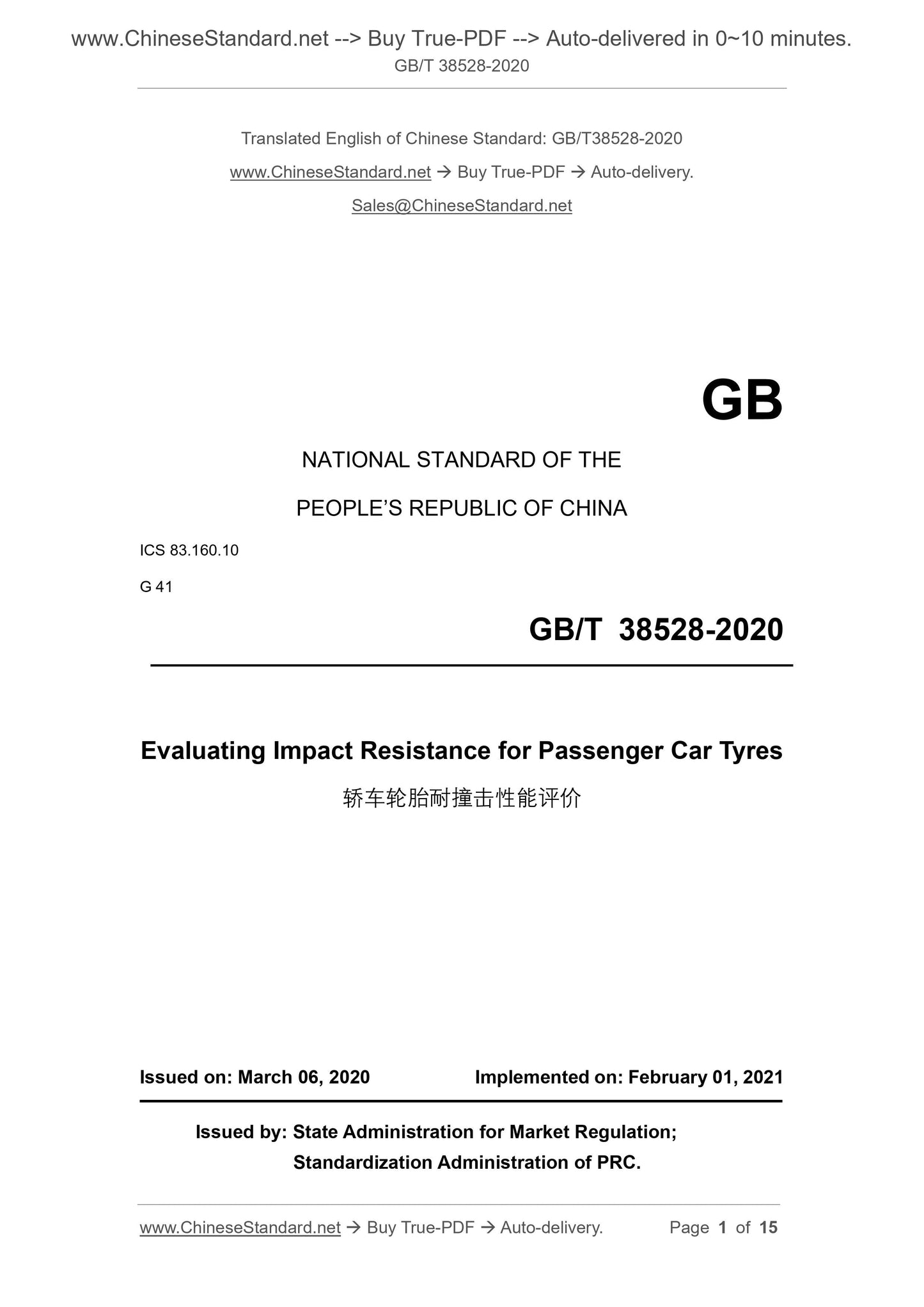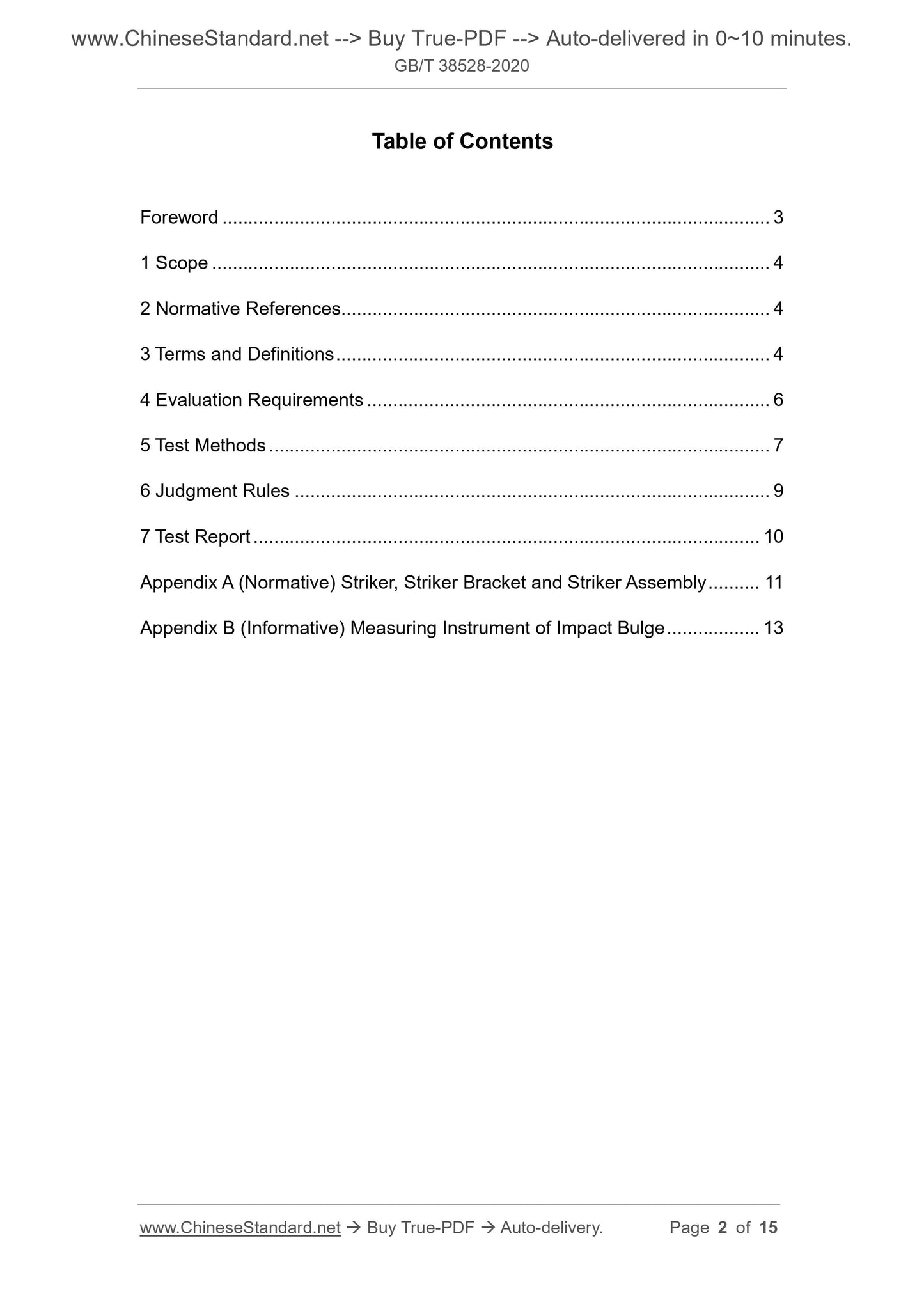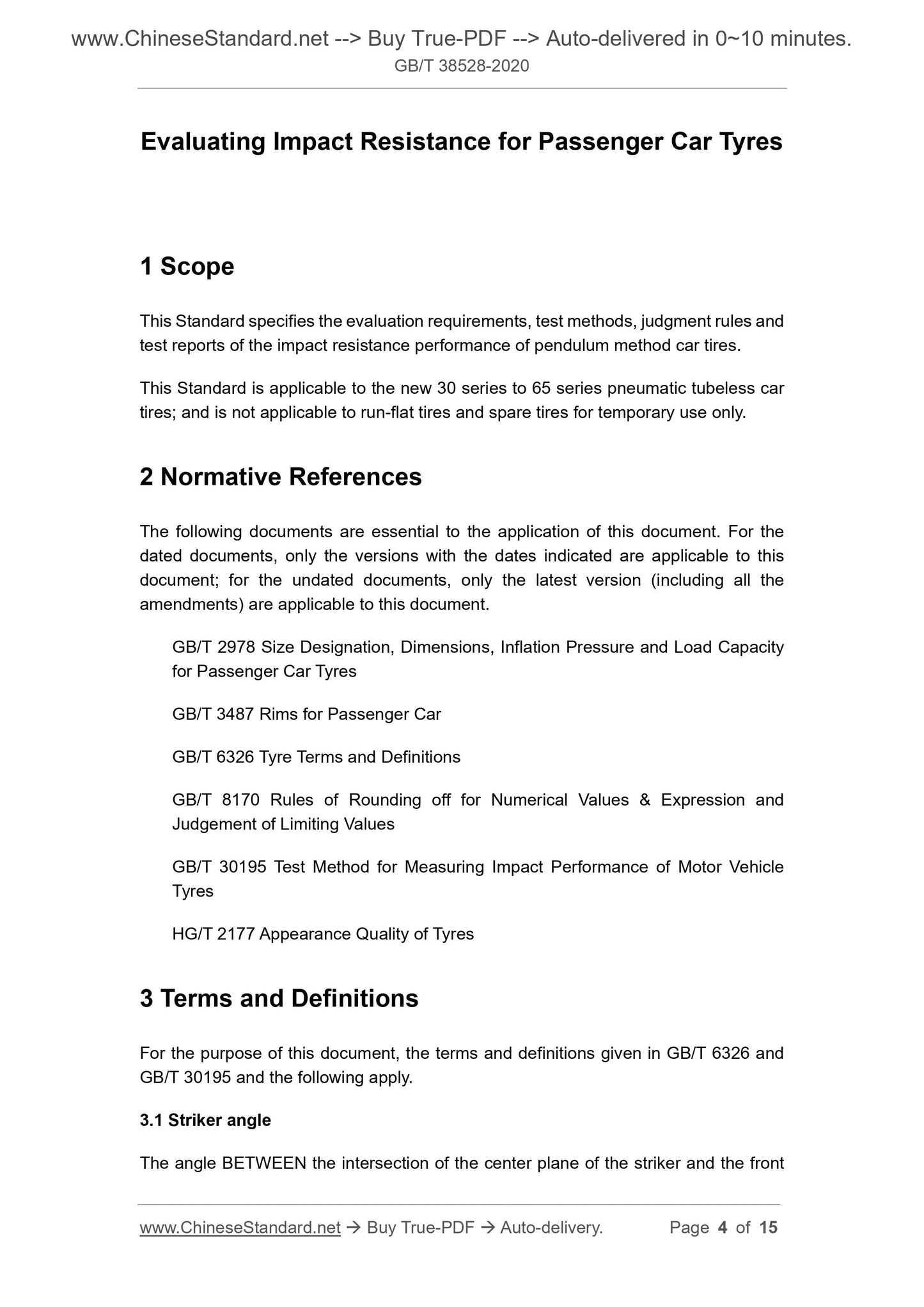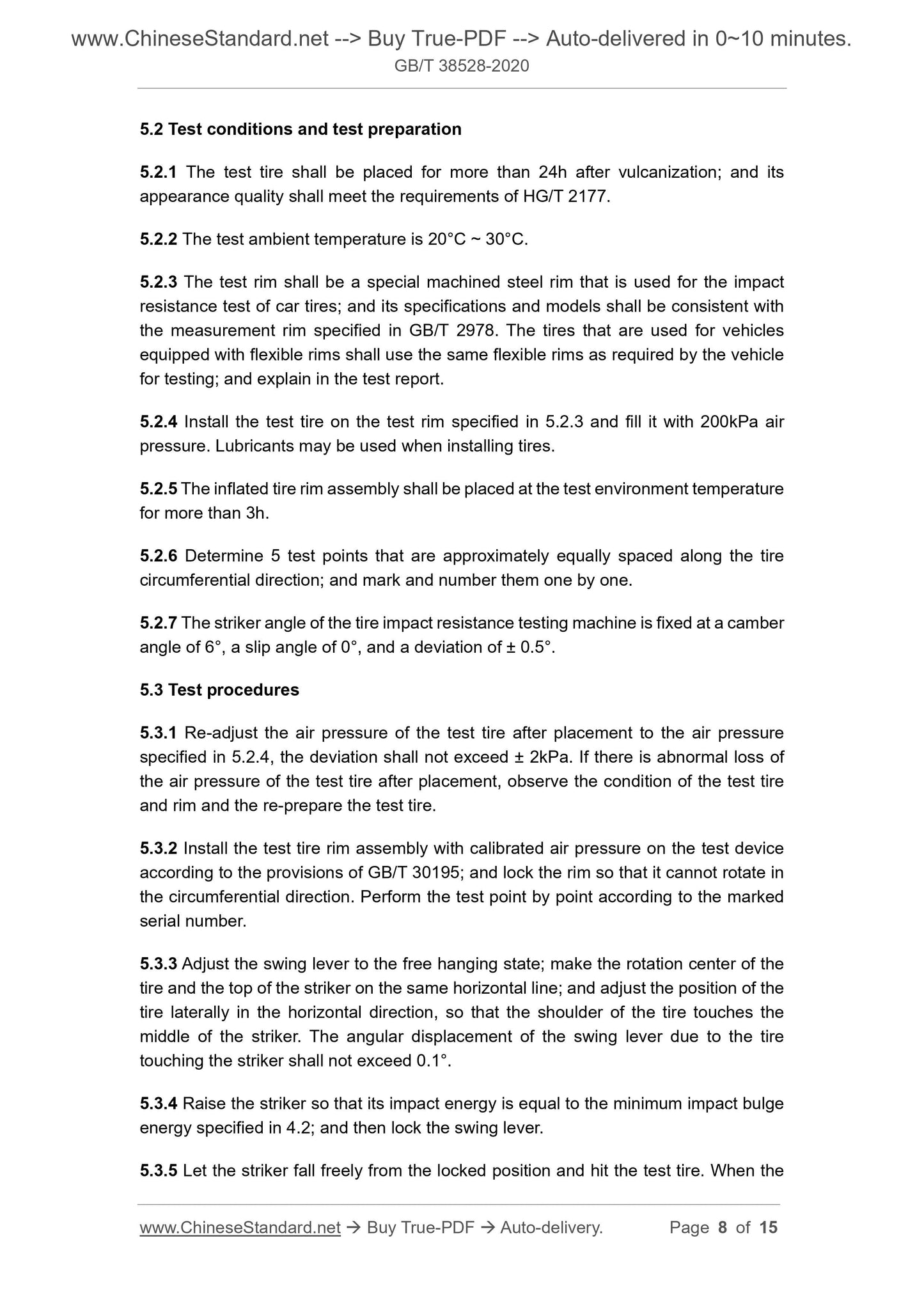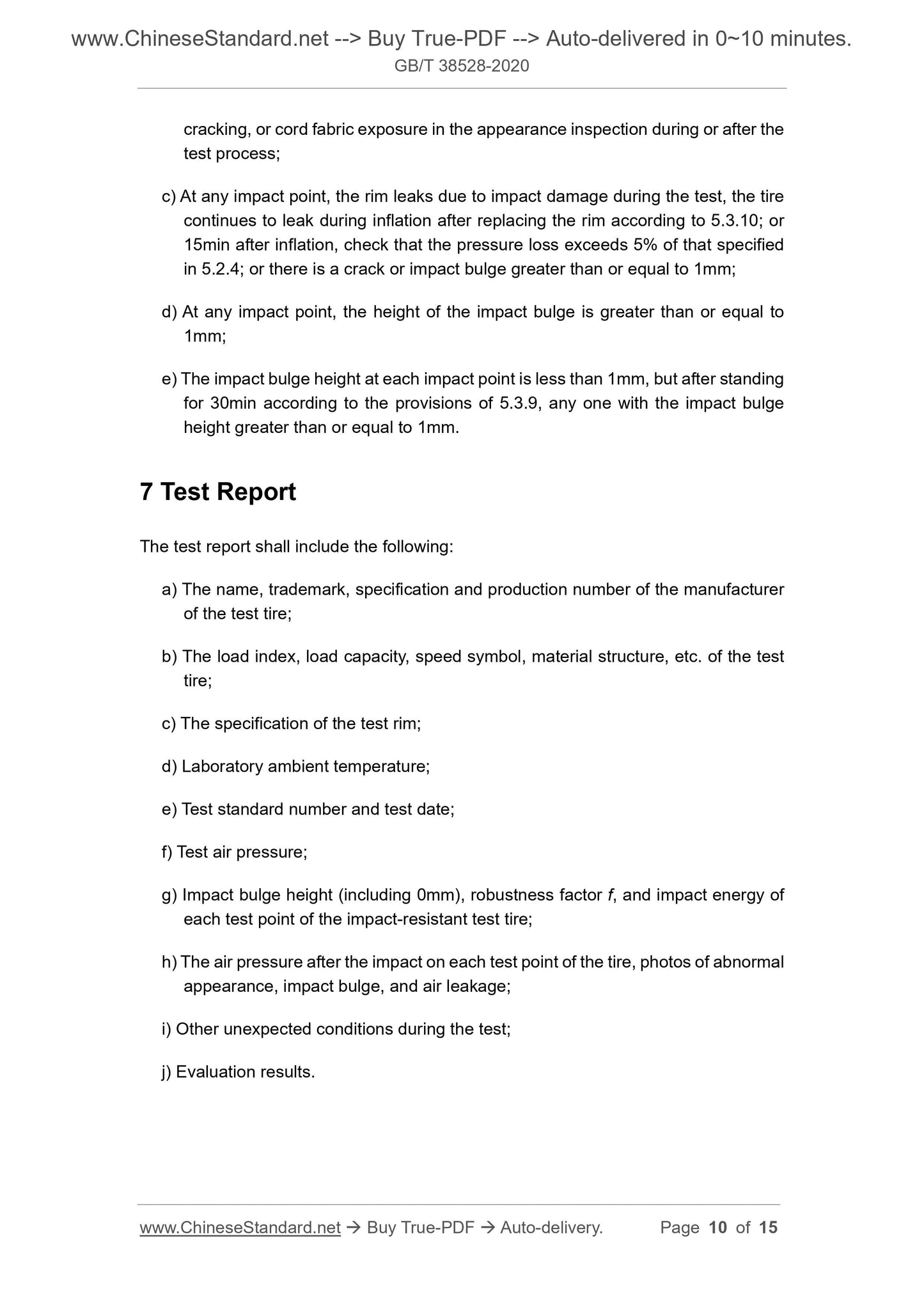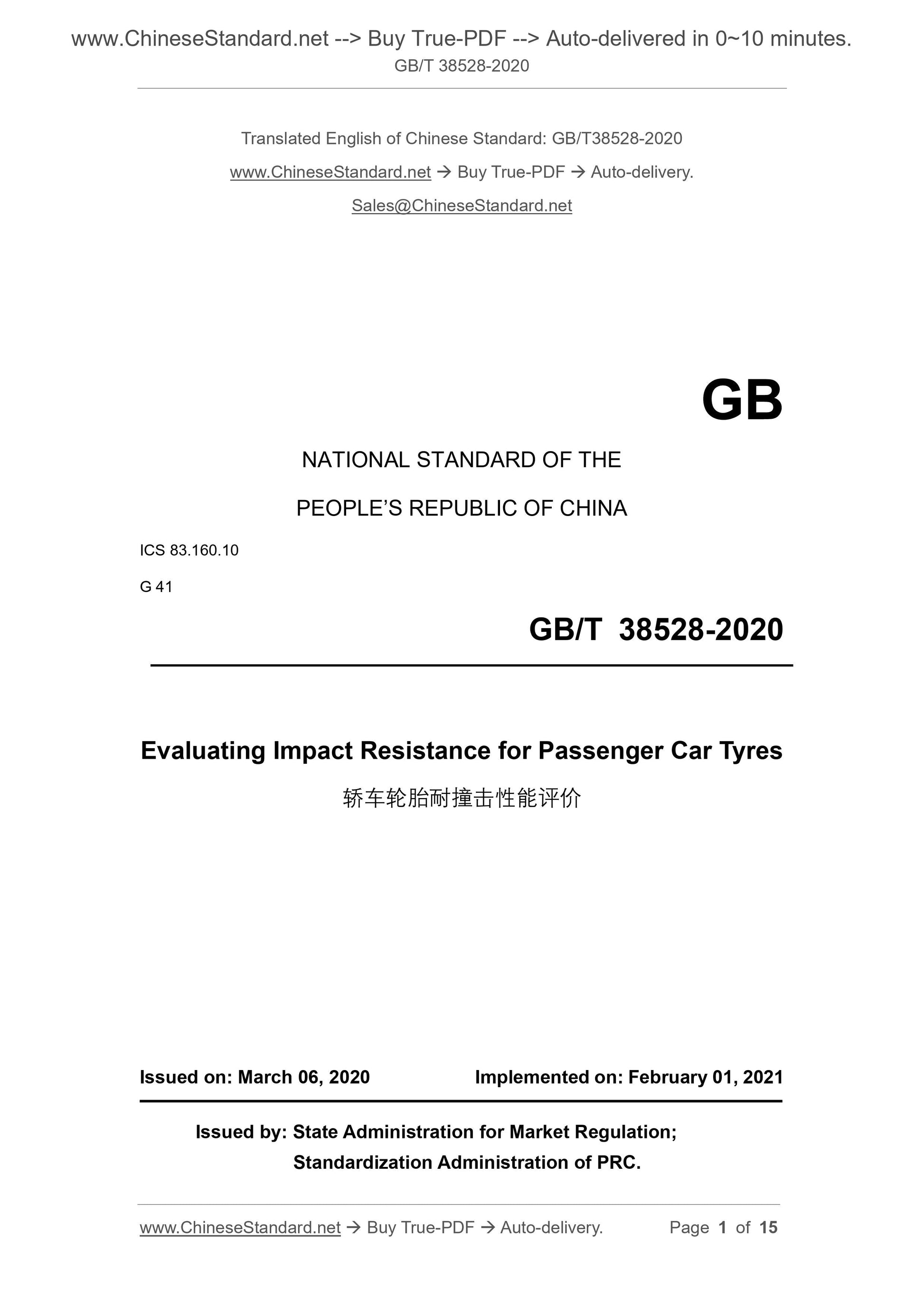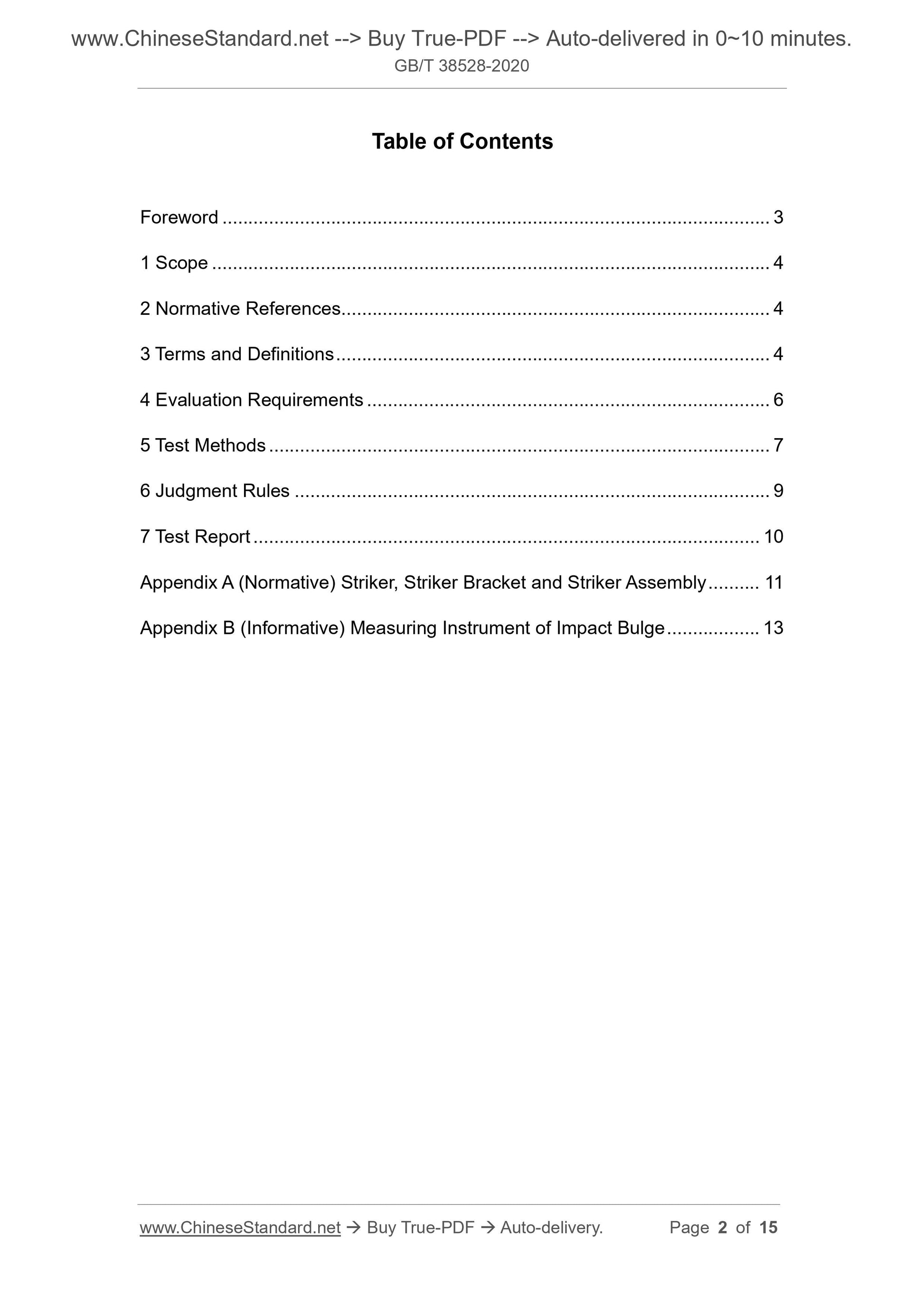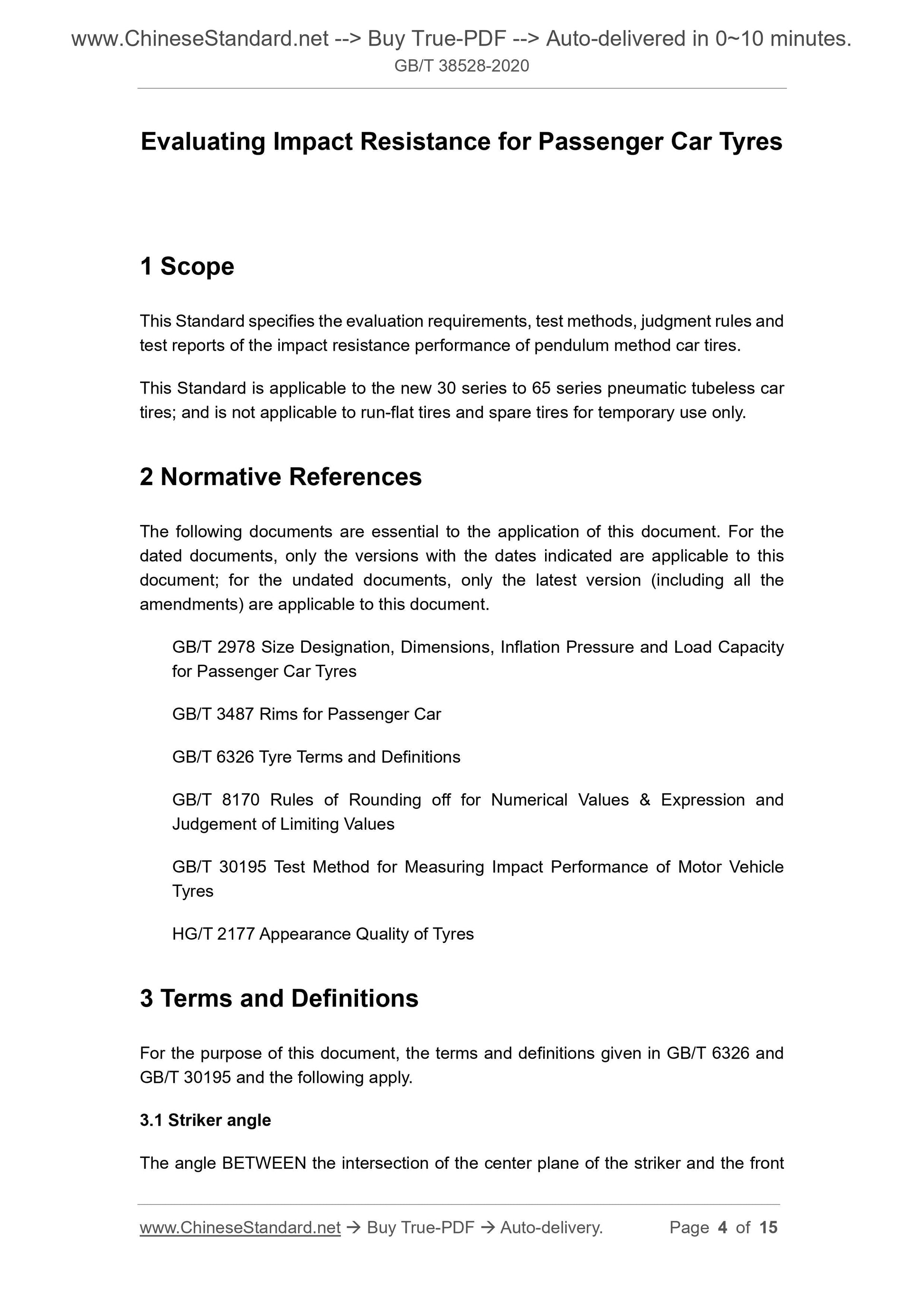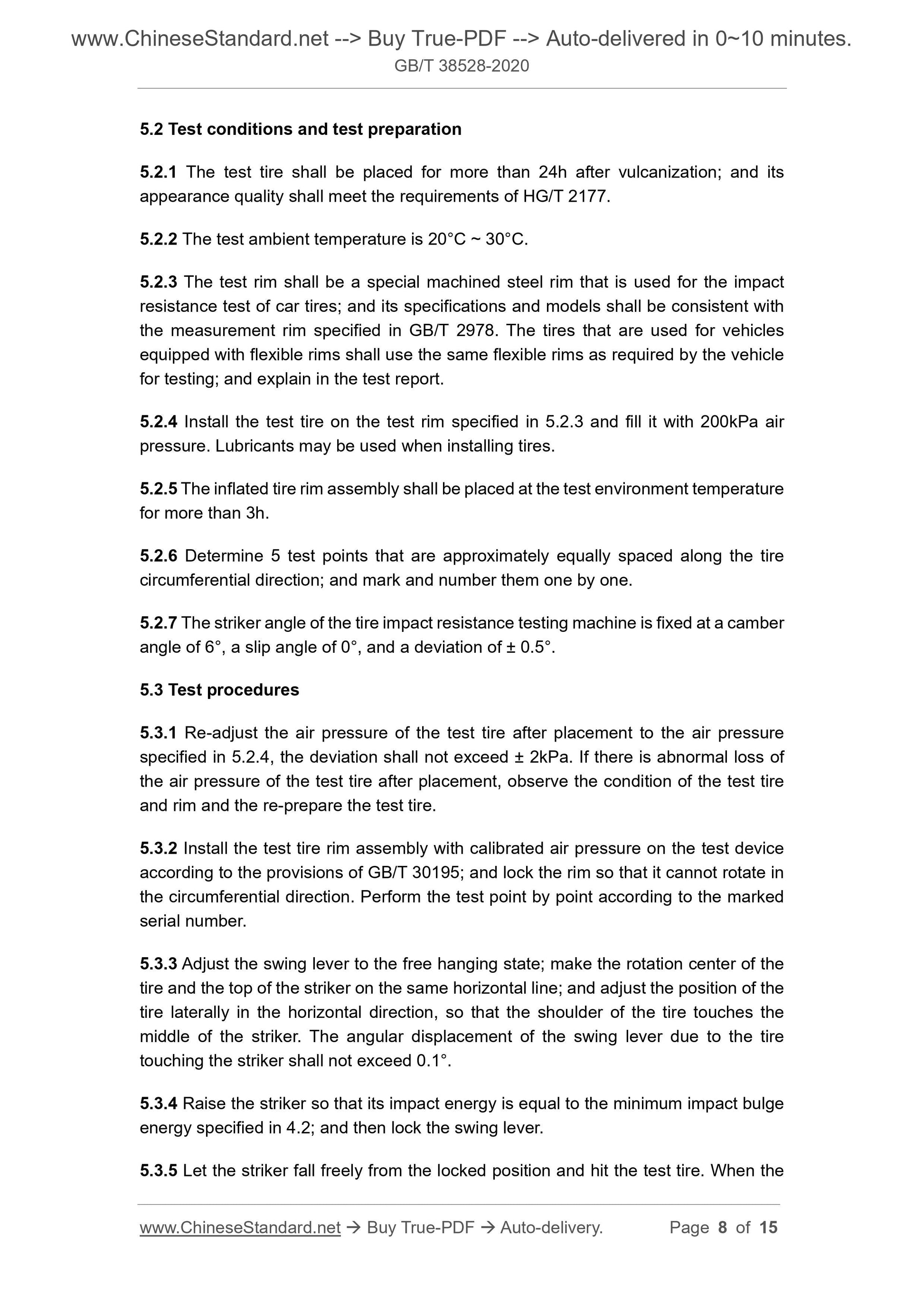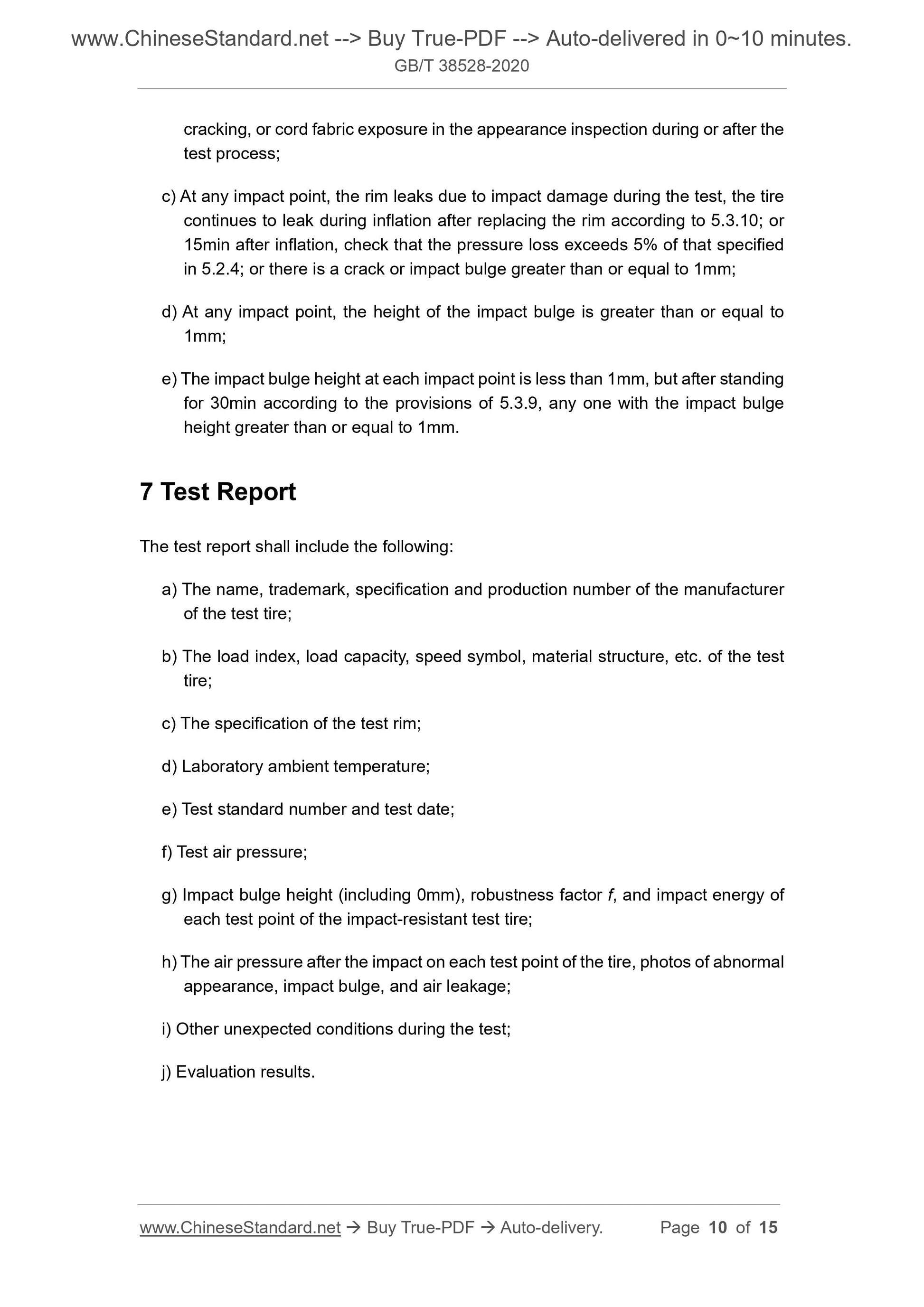1
/
of
5
www.ChineseStandard.us -- Field Test Asia Pte. Ltd.
GB/T 38528-2020 English PDF (GB/T38528-2020)
GB/T 38528-2020 English PDF (GB/T38528-2020)
Regular price
$185.00
Regular price
Sale price
$185.00
Unit price
/
per
Shipping calculated at checkout.
Couldn't load pickup availability
GB/T 38528-2020: Evaluating Impact Resistance for Passenger Car Tyres
Delivery: 9 seconds. Download (and Email) true-PDF + Invoice.Get Quotation: Click GB/T 38528-2020 (Self-service in 1-minute)
Newer / historical versions: GB/T 38528-2020
Preview True-PDF
Scope
This Standard specifies the evaluation requirements, test methods, judgment rules andtest reports of the impact resistance performance of pendulum method car tires.
This Standard is applicable to the new 30 series to 65 series pneumatic tubeless car
tires; and is not applicable to run-flat tires and spare tires for temporary use only.
Basic Data
| Standard ID | GB/T 38528-2020 (GB/T38528-2020) |
| Description (Translated English) | Evaluating Impact Resistance for Passenger Car Tyres |
| Sector / Industry | National Standard (Recommended) |
| Classification of Chinese Standard | G41 |
| Classification of International Standard | 83.160.10 |
| Word Count Estimation | 14,115 |
| Date of Issue | 2020-03-06 |
| Date of Implementation | 2021-02-01 |
| Issuing agency(ies) | State Administration for Market Regulation, China National Standardization Administration |
Share
